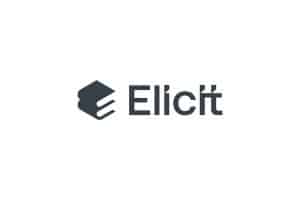Note: This is an overview of artificial intelligence (AI) and its connection to student/professional research assignments, as well as academic libraries. It is not exhaustive and is intended only to provide an introduction.
Generative AI has sparked numerous controversies, particularly regarding its use in producing new information. The accuracy, intellectual property rights, and ethical and legal uses of generative AI products are often debated. Faculty and students must carefully consider their use of artificial intelligence and be mindful of any potential ethical, legal, or academic code violations. For academic purposes, it is particularly important to consider Southern Arkansas University’s AI policies, including, but not limited to, the university’s Code of Ethics, Academic Integrity Policy, and any guidelines from instructors, supervisors, or accrediting bodies.
While AI seems to be in many aspects of life, it has yet to replace the need for human knowledge, skills, and abilities. University students need active learning experiences to help them connect research assignments to real-world performances as professionals (Supiano, 2022). Andragogy connects educational experiences with application outside of the classroom (Knowles et al., 2015). Academic libraries contribute to this educational process by providing resources and services:
- Library and information literacy instruction, including AI (Lo, 2023; Lo, 2024)
- Spaces for social interaction and learning
- Library materials (Oliveira, 2017)
- Particularly for first-generation college students less familiar with library services, spaces, and access/discovery of information (Stocking et al., 2024)
Academic libraries provide resources and services to support students throughout the learning process, often integrating AI education. Students experience research anxiety due to a required academic rigor that often differs from their previous educational experiences (Henderson, 2023). AI makes it easier (at least seemingly) for students and professionals, but more education about AI is needed since it is here to stay. In a recent report on professionals using AI, 84% intend to continue using it (Arroyo-Machado et al., 2025). Some of the topics addressed during the library instruction sessions at SAU include an introduction to information literacy and related skills, targeting:
- SAU’s information literacy standards
- Evaluating resources (including AI outputs)
- Ethically using information
- APA, CMoS, MLA citations and references
- Introduction to AI and SAU’s AI policies
- Searching and using physical library resources
- Searching and using electronic library resources
What is information literacy and AI literacy?
Information literacy is a core component of the educational goals at SAU. Information literacy is a set of skills that professionals use to solve problems and is interwoven with the professional model of evidence-based practice: what we do in practice as professionals is based on high-quality research (Levesque, 2018). Professionals rely on these skills when they are unsure of the answers to problems and when they need to justify their actions. Information literacy and evidence-based practices are often called into action when professionals use and evaluate AI outputs. Information literacy encompasses AI literacy meaning that AI literacy is a special set of information literacy competencies. The Association for College and Research Libraries has AI literacy guidelines and recognize the importance of academic libraries roles in educating and providing resources to aid with AI use.
Disadvantages of AI Uses
When students and professionals utilize AI, they must consider its advantages and disadvantages. AI has many uses, disuses (when left unchecked and causing adverse effects), and misuses (when deliberately used inappropriately), and usually needs evaluation and fact-checking (Cordona et al., 2023; Kozuh & Caka, 2023; Shin, 2022; Tomassi et al., 2024). AI outputs or results might be:
- Hallucinated (it makes up fake information)
- Biased (guides to a certain perspective and often overlooks others)
- Misleading (often incomplete in its report or research)
- Unverified sources (often pulling information for unknown or unvetted resources)
- Privacy/security of data (your and others information given to or taken from the AI may no longer be private or secure)
- +many other professional/industry standards (Hwang, et al., 2023; Tiernan et al., 2023; Wang et al., 20231)
Many are concerned about hallucinations since these instances are when the AI makes up false information. Biases and misleading information in AI outputs are sometimes difficult to detect, so it is a good idea to compare information with verified resources. Even when an AI offers citations and references for resources used, be aware that these may sometimes be hallucinations. It is essential to verify that the resources actually exist and accurately reflect the interpretations provided by the AI and forms of social media (Kožuh & Čakš, 2023). Privacy and security issues include the AI taking information provided by the user. Whether it is information entered manually or copied and pasted into AI, the data usually becomes part of many AI platforms, which can cause problems when working with non-disclosure agreements and sensitive data that should not be disclosed. Avoid entering or providing AI information if:
- A non-disclosure agreement is in effect or implied
- The information has property rights (including copyrights like those found in published books, library databases, ebooks, etc.)
- There are privacy laws, ethics, rules, etc. in effect or implied
Advantages of AI Uses
Although AI outputs require review for accuracy, AI can still help researchers and learners in numerous ways. AI has been connected with positive results in inquiry-based learning (Cordona et al., 2023; Hutchinson, 2024; Kim & Lee, 2022; Kong et al., 2024; Maykut et al., 2024; Wang & Chen, 20232). AI has been associated with:
- Helping brainstorm or explore concepts
- Helping identify some key researchers, leaders, related laws/theories, or points on topics
- Helping identify some literature about the topic
- Helping create useful graphics and illustrations
- +more
AI Prompting (Generative Forms of AI, such as Gemini, Copilot, ChatGPT, etc.)
Many argue about the best way to develop AI prompts that are the most effective. Lo (2023, 2024) has led librarians in AI prompt generation with his CLEAR approach. However, many variations have emerged. Many find that the more specific the prompt, the better the results, particularly when they target the follow aspects for their research assignments:
- Tell the AI what role you want it to assume (an expert, a novice, a student, etc.).
- Tell the AI what situation or context that it is working, such as student, professional, imaginative, creative, novice, etc.
- Tell the AI what type of work or task you want it to perform.
- Tell the AI any specifics that must be considered, such as specific requirements, limits, tone of wordage, etc.
- Interact with the AI after it produces each response, specifying any changes or other details that need to be included, excluded, etc.
Always review the AI work for errors. This often requires not only verifying that the AI output makes sense but fact checking using verified information in books, journals, research databases, etc.
Documenting AI
Another aspect of AI is documenting its use. Magale Library provides a Citation Resources library guide to help students with the basics of citations and references in the American Psychological Association (APA), Modern Language Association (MLA), and Chicago Manual of Style (CMoS), including documenting AI. Students may be required to report and provide additional documentation of use of AI in academic assignments.
Why Academic Libraries in the Age of AI?
Libraries, particularly academic libraries, strive to provide resources in the form of physical and electronic collections, as well as librarians trained as information professionals. Open-access AI tools, such as ChatGPT, Gemini, and Copilot, typically do not have access to resources behind paywalls, including major research databases like EBSCO, ProQuest, JSTOR, and Elsevier.
Research databases offer a wide range of resources and are curated by professionals to provide targeted materials that support researchers and related professionals, including scholarly and peer-reviewed content. Copyrights and other property rights are paid through library licenses that provide access to research database content for library patrons; however, this access does not include open-access AI. In response to increasing requests for AI tools, vendors such as EBSCO, ProQuest, JSTOR, Credo, and Britannica Online have developed AI capabilities within their platforms to help users locate and utilize their licensed resources.
What are some policies or considerations for when and how AI may be used?
AI use recommendations and policies vary. SAU allows faculty to make decisions about AI use in their courses and their AI policies. The typical warnings, permits, and bans of AI use mimic many seen in professional settings, including the following three examples.
Example 1: No AI Permitted

Using generative AI and related technologies to assist or complete your work in this course is considered an academic integrity violation subject to disciplinary action.
Example 2: Some AI Permitted
THE USE OF GENERATIVE ARTIFICIAL INTELLIGENCE IS PERMITTED IN SPECIFIC COMPONENTS OF THIS COURSE
Students must carefully review the course syllabus and assignment instructions to determine where, when, and how generative AI is allowed. It is the student’s responsibility when permitted to clearly and formally document the use of generative AI when used. Failure to cite the use of generative AI is considered an academic integrity violation and is subject to disciplinary action.
Example 3: AI Is Permitted

Generative AI is allowed for use in course assignments. It is the student’s responsibility to clearly and formally document the use of generative AI when used. Failure to cite the use of generative AI is considered an academic integrity violation and is subject to disciplinary action.
Generative AI can be grouped into many categories with some AI platforms capable of more than one output depending on their parameters and users. Below are examples of types of AI:
Types of Generative Artificial Intelligence: Examples
Text Generation, Grammar, and Text Editing |
Coding |

|

|
Image Creation |
Video Generation |

|
 |
Information Generation and Synthesis |
Research |

|













